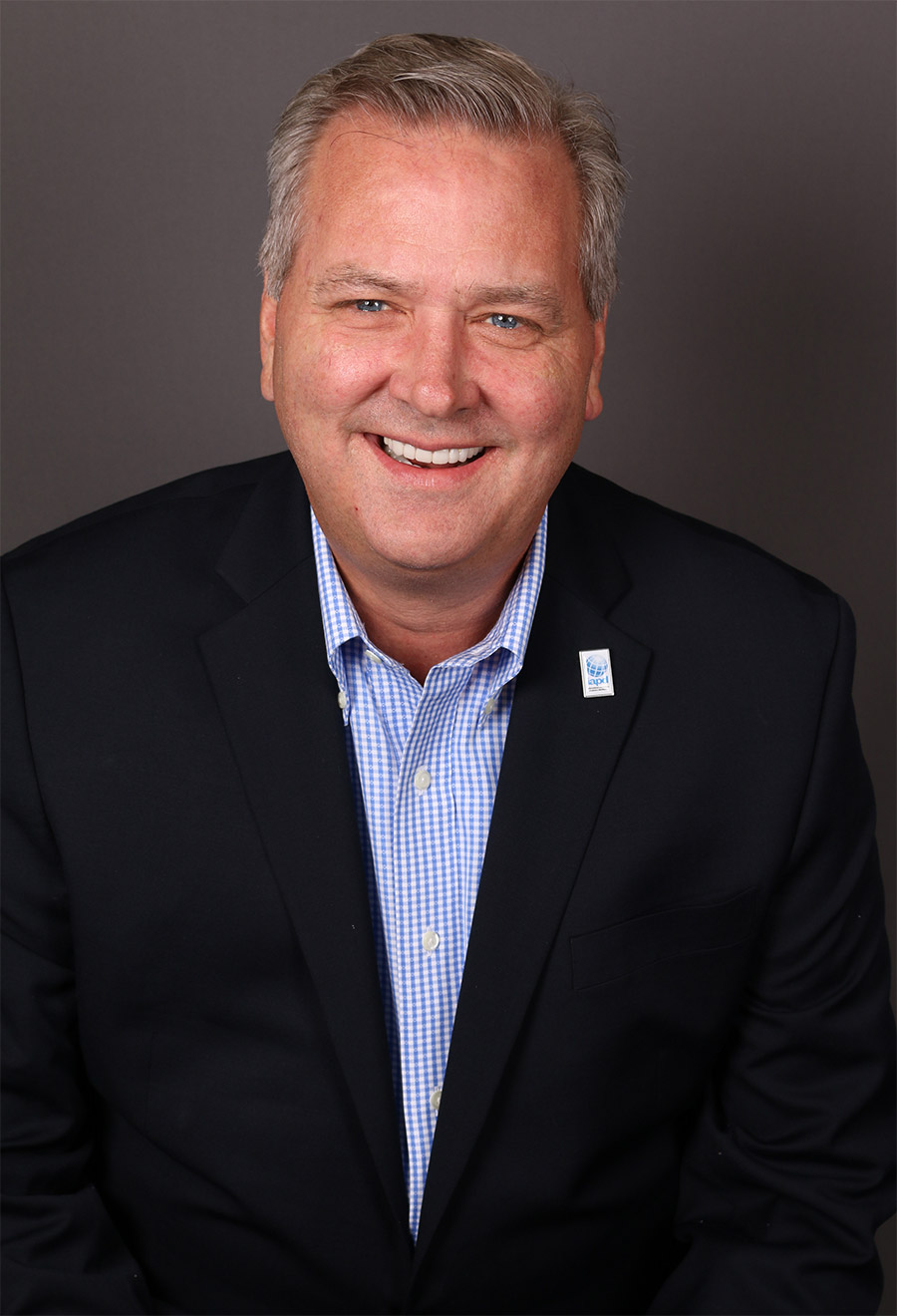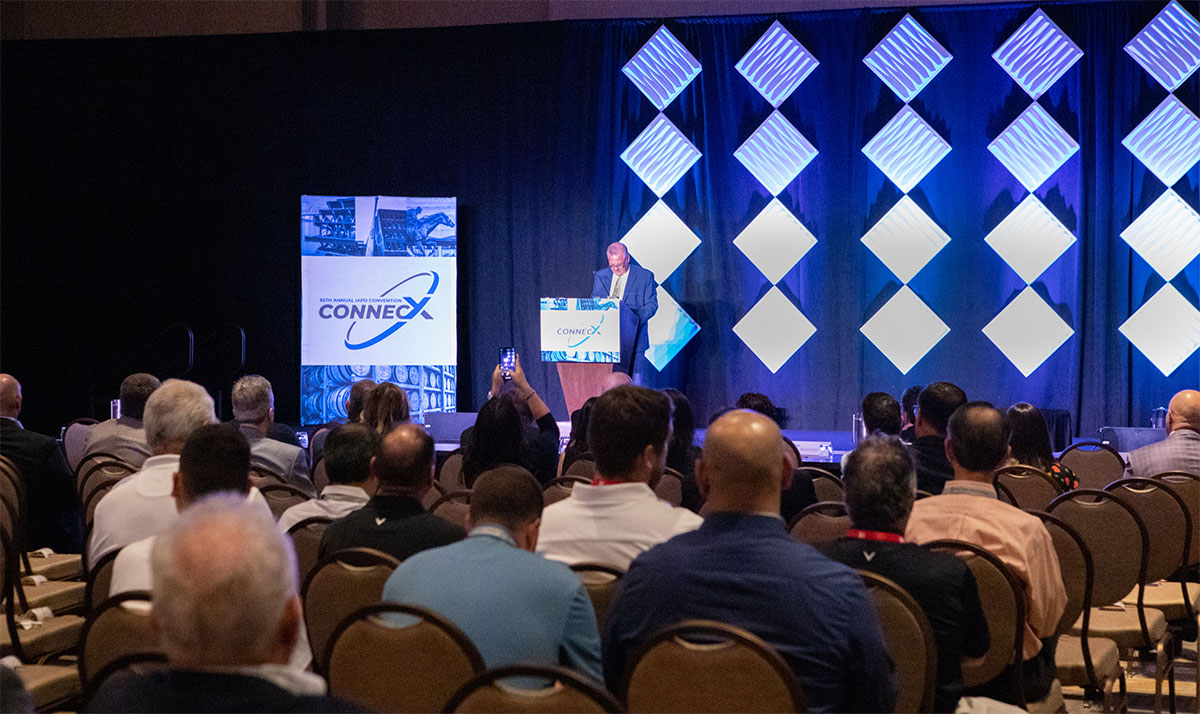by Craig Saunders
Outgoing IAPD President
hat a couple of years it’s been. And I thought last year was challenging.
Even though it sounds like an exaggeration, the world has truly changed since the last time I addressed you from this stage. The last two years have been disruptive in ways we would have never expected before the pandemic.
As I think about the performance plastics industry and what we have all been through, I’ve recognized some “universal truths” that apply to the industry as well as, perhaps, most of us.
Performance plastics in crucial roles

First, the pandemic has shown the world the benefits of performance plastics. Prior to COVID-19, we were able to give great examples of applications made from our materials, and those applications have tremendous benefits to society: lighter weight aircraft allows for the use of less fuel, medical applications such as incubators save the lives of premature infants, the applications are endless.
When we first started understanding how COVID-19 particles are transmitted through the air, IAPD members rallied to provide clear plastic barriers for essential businesses. As we know, these barriers were designed to keep employees and customers safe while keeping the economy open. These barriers, as well as the face shields and other personal protection equipment that IAPD members were creating, also made our industry visible to the media and public. For a few months, at least, performance plastics were seen as crucial to public health, rather than the enemy. Countless IAPD members were highlighted in local and national media about the lifesaving applications they were providing the public: employees moving into production facilities during the shutdowns; manufacturers, distributors and fabricators retrofitting their operations to produce needed materials or fabricate personal protection equipment or barriers; and members helping their local communities through donations of personal protection equipment or supporting local vaccination clinics. We were heroes during this crisis, and we were recognized for our efforts by many of the major media outlets.
This brings me to a point that I made during my speech at the 2019 convention: IAPD members can do more collectively through the association than each of our individual companies can do on our own. After the past two years, I would say that this is more true than ever.
I’m pleased to help lead the new Recycling Task Force that is working on the issue of making sure that the materials we manufacture and distribute are part of the circular economy. We have very talented people from diverse backgrounds working on this issue, and I look forward to what this task force will be able to do. The good will that we gained with the use of performance plastics to combat the pandemic will now draw attention to the recyclability and repurpose of those materials. Let us show the world that we, as the performance plastics industry, can come together and find the solutions.
Prior to the pandemic, I know that so many of us were struggling with attracting employees to the industry. That is an even more pressing challenge for us in the mid- to post-COVID environment. Being able to show the emerging workforce that we are an environmentally responsible industry will be crucial to overcoming the negative perceptions of performance plastics and, ultimately, appealing to them as employers that they can be proud to work for.
IAPD is developing an imaging campaign to promote the industry to this demographic and will provide you with a toolkit that you can use in your recruitment efforts. Again, this is an investment that makes more sense for us to work collectively through IAPD, than as individual companies.
Another new task force has formed to focus on the needs that IAPD members have with attracting employees to work in the skilled trades. These experts are working together to overcome the problems that we’re facing from wage inflation, competition from other industries and the many other issues of attracting and retaining the skilled trade talent. This task force is made up of subject matter experts that will certainly help guide IAPD to producing the right resources for all members to use in their recruitment.
Today we’re facing new and different challenges, such as the shortages of raw materials, logistics and transportation issues and freight limitations. There are looming threats in the form of aggressive anti-plastics legislation and regulations.
If you aren’t aware of what IAPD’s Government Relations team is doing to support this pillar, reach out to anyone on the committee or IAPD staff and they will tell you just how critical this work is, especially with the anti-plastics sentiments in Washington now.
Our GR team has been working tirelessly to make sure that legislators know about the differences between performance plastics and consumer-grade plastics. This groundwork is critical, as some draft legislation and regulations, designed to impact consumer plastics, would also devastate our industry. We are making the case that if the production of the basic elements of plastics are limited, then society won’t have the environmental benefits that come from performance plastics, such as electric vehicles, water infrastructure or solar panels.

Finally, I’d like to thank my colleagues at North American Plastics for all of their support while I’ve been IAPD President. Thank you to the IAPD Board of Directors and the Executive Committee, who I’ve enjoyed serving with. Thank you to the IAPD staff. Thank you to all of you for your time and attention today. Please take what I said to heart and see how you can engage with IAPD to help solve the issues we’re facing today. And, most of all, thank you to my wife Monique who has taken this journey with me. This may have been one of the more unusual terms an IAPD president has served, but it has been a rewarding and valuable experience. I look forward to what the future has in store for the association, the industry and for all of us.
And now it is my pleasure to introduce a great friend and leader as your next IAPD President, Deborah Ragsdale.